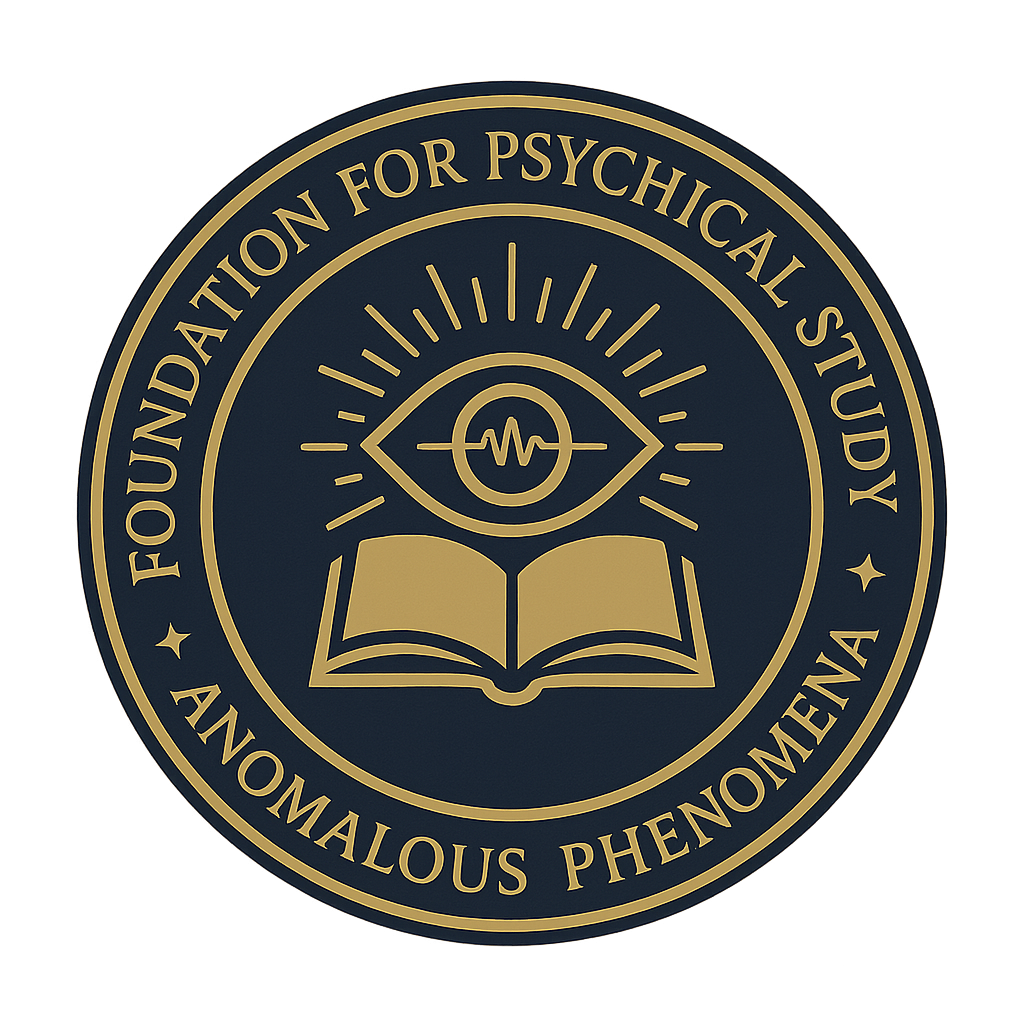Empowering Research and Investigation
Advanced Tools for the Curious Mind
Our suite of software offers unparalleled resources for those delving into the mysteries of the paranormal. From logging and analyzing data to accessing historical archives, our tools are crafted to support rigorous investigation and scholarly inquiry.
Whether you’re a seasoned investigator or a curious scholar, our programs provide the technological edge needed to explore psychical phenomena with precision and depth.
Featured Software Solutions
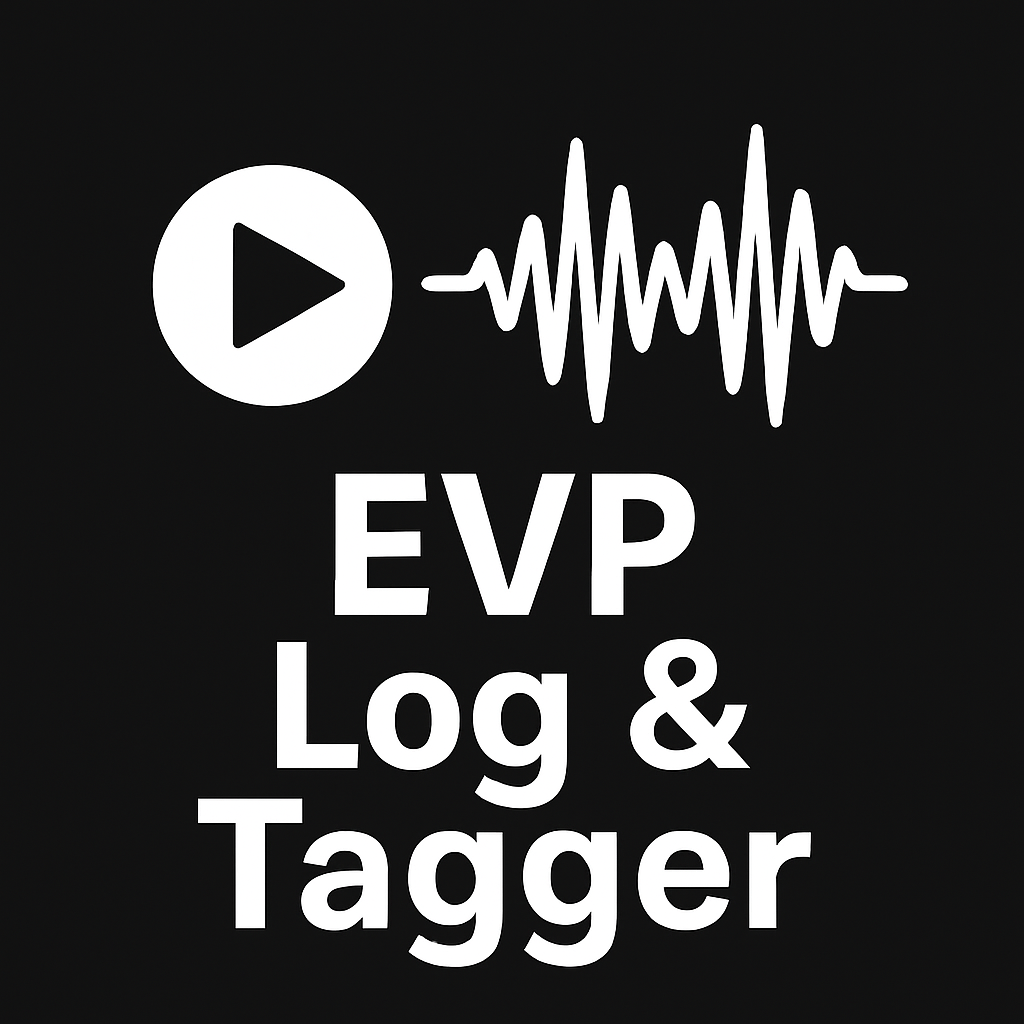
EVP Log & Tagger
The EVP Log & Tagger is a specialized tool designed for researchers and investigators to document, organize, and analyze Electronic Voice Phenomena. Users can record sessions, add precise time-stamped notes, and tag unusual sounds or words for later review. By combining structured logging with intuitive tagging, the tool makes it easier to distinguish natural noises from potential anomalies, ensuring that EVP evidence is cataloged in a consistent, professional manner.
Features
Audio Playback
-
Supports WAV, MP3, and OGG files (system-codec dependent).
-
Basic controls: Play, Pause, Resume, Stop.
-
Live timestamp counter that shows the current playback position in minutes:seconds.
Timestamp Tagging
-
Click Add Timestamp at any moment during playback to capture the current audio time.
-
Add a Tag (short keyword like “Whisper,” “Knock,” “Voice”) and an optional Note (context such as “Back hallway, no one speaking”).
-
Each entry is saved with:
-
Timestamp (formatted as MM:SS)
-
Exact seconds (float)
-
Tag
-
Note
-
Source file name
-
Organized Log View
-
Captured entries are listed in a table inside the app.
-
Each entry is numbered in sequence.
-
Easily scroll and review notes as you work through a session.
Export Options
-
CSV Export: Creates a spreadsheet-ready log with all timestamps, tags, notes, and the audio file reference.
-
TXT Export: Generates a clean, human-readable text report, ideal for attaching to case files or sharing.
Case Management
-
Clear Log button resets all entries when starting a new session.
-
Exported files remain on disk for permanent recordkeeping.
-
Everything runs locally, no internet required, no cloud storage.
Investigator-Friendly Design
-
Lightweight, runs on ordinary laptops in the field.
-
Dark UI for night investigations to reduce screen glare.
-
Tip reminder for quick learning.
How to Use
1. Load an EVP Recording
-
Click Load Audio.
-
Select your recording file (WAV recommended for reliability).
-
The file name appears at the top of the app.
2. Play and Navigate
-
Press Play to start.
-
Use Pause and Resume as needed.
-
The live counter shows elapsed time.
3. Add a Timestamped Entry
-
As you hear an anomaly, enter a Tag (e.g., “Voice,” “Tap,” “Whisper”).
-
Add details in Note (location, context, investigator’s impression).
-
Click Add Timestamp.
-
The entry appears in the log table.
4. Export the Session Log
-
When finished, click Export CSV to create a spreadsheet-friendly log.
-
Or click Export TXT for a readable case report.
-
Save files to your investigation folder.
5. Start Fresh
-
Use Clear Log before loading a new recording.
Best Practices
-
Use short, consistent tags (e.g., “Voice,” “Knock,” “Bang”) for easy sorting later.
-
Fill in Notes with investigative context:
-
Where the recorder was placed
-
Who was present
-
Environmental details (wind, traffic, pipes)
-
-
Always include baseline tags for known noises (team cough, door slam) to avoid false positives.
-
Save logs immediately after each session to avoid data loss.
Example Workflow
-
Load Session1.wav.
-
Press play. At 00:42, faint whisper heard → Tag: “Whisper”, Note: “Living room, only Mike present.”
-
At 02:17, loud bang → Tag: “Bang”, Note: “Kitchen, possible fridge noise.”
-
Finish playback, export to
Session1_Log.csv. -
Clear log, load next recording.
AI Solutions
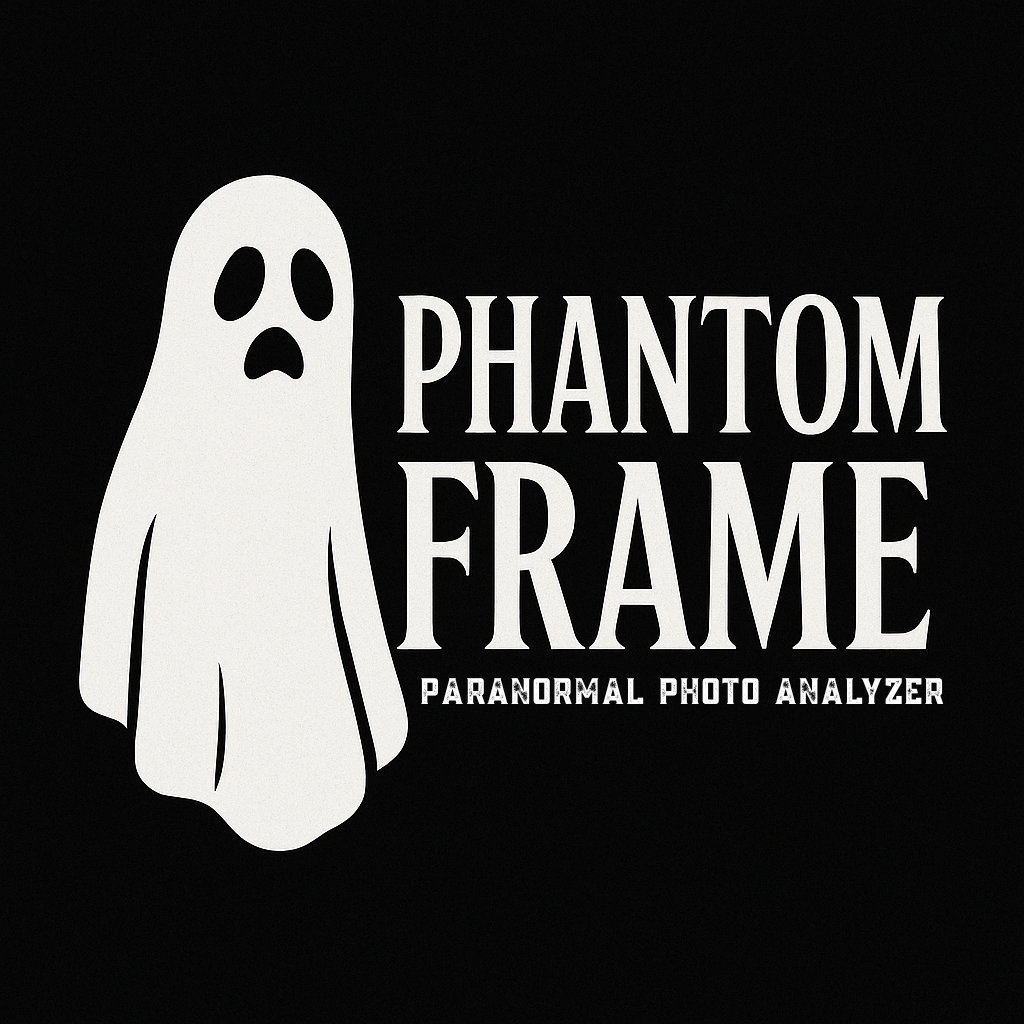
PhantomFrame Paranormal Photo Analysis
PhantomFrame analyzes user-submitted photos believed to contain paranormal phenomena. Each image is broken down from two perspectives: skeptical (scientific/photographic) and paranormal (folklore/anomaly classification). It offers a balanced, respectful review, never declaring a ghost “confirmed,” but giving users a structured analysis.
Full Feature Set – PhantomFrame Capabilities
Skeptical Interpretation
-
Photographic Artifact Detection:
Detects and explains lens flare, motion blur, chromatic aberration, digital noise, reflections, and compression artifacts. -
EXIF Data Analysis (if available):
Interprets ISO, shutter speed, aperture, device type, flash, and zoom settings for context. -
Image Enhancement Tools (on request):
AI overlays of motion trails, light direction, or suspected tampered areas. -
Environmental Context Review:
Uses weather, location, and lighting (if provided) to evaluate natural factors like breath mist or insect reflection. -
Likelihood Scale:
Assigns a Mystery Likelihood Score (1–10) – 1 = strong anomaly, 10 = very likely natural or faked.
Paranormal Interpretation
-
Anomaly Classification System:
Labels possible anomalies (e.g., Orb, Ectoplasm, Apparition, Shadow Figure, Light Entity, Unexplained Motion). -
Pattern Recognition:
Cross-references shapes, colors, and formations with known types of ghost photos and global folklore. -
Folkloric Context:
Links to spiritualist photography history and legends from around the world (e.g., Brown Lady of Raynham Hall, Filipino white lady spirits). -
AI Tampering Detection:
Flags signs of digital manipulation or AI-generated elements.
Educational Mode (Optional)
-
Forensics Training:
Teaches you to detect artifacts, interpret EXIF, and understand photography basics. -
Glossary Access:
Explains terms like pareidolia, chromatic aberration, and double exposure. -
Ask Me Anything:
Request breakdowns of terms like “motion blur” or scenarios like “Could this be a camera strap?”
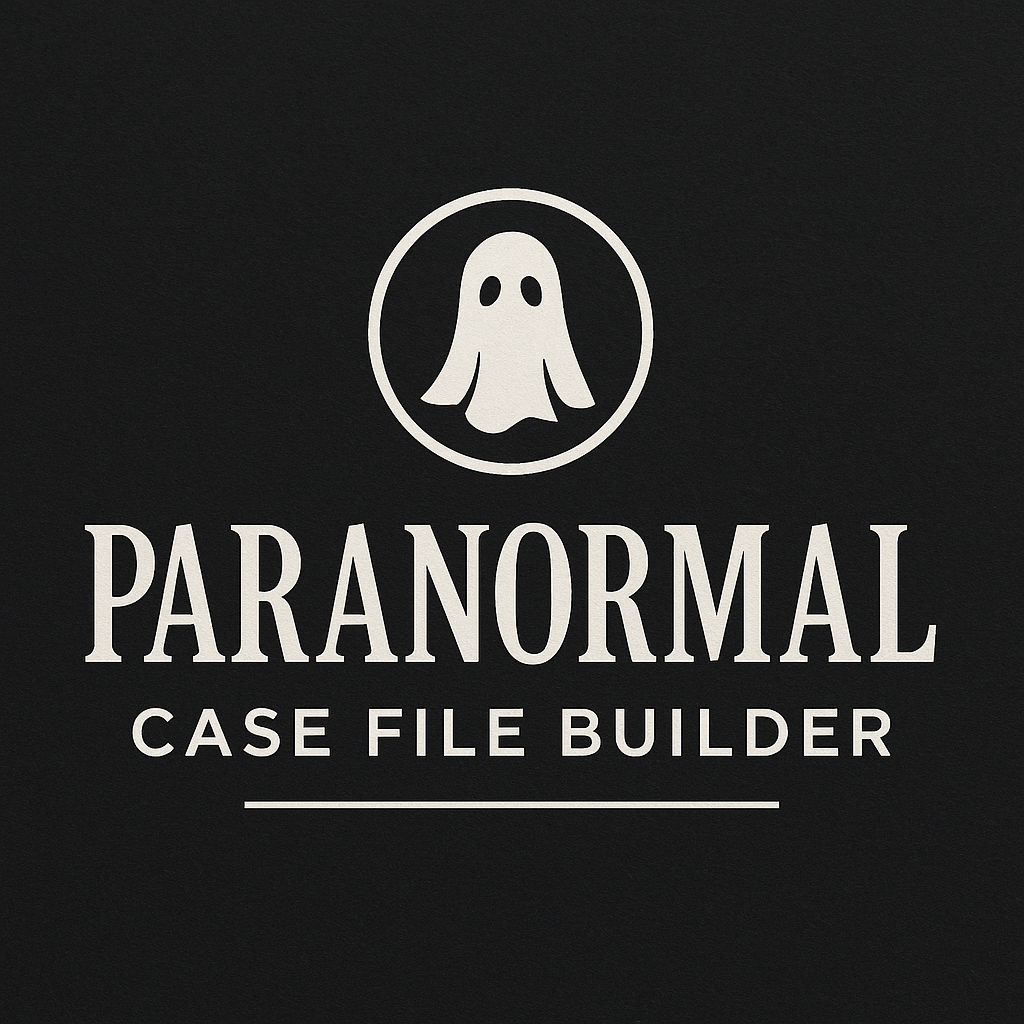
Paranormal Case File Builder
The Paranormal Case File Builder, a structured documentation assistant designed for the systematic collection, classification, and archival of data pertaining to paranormal investigations. Its role is to facilitate rigorous case-building through modular data entry, metadata structuring, analytical classification, and media-enhanced investigation workflows. It does not validate paranormal claims but provides a forensic-style framework to analyze and preserve information, enabling pattern detection and longitudinal study across multiple cases.
System Features:
1. Modular Case Construction
-
Metadata Collection: Timestamp, location (GPS optional), client anonymity settings, investigator credentials, and equipment logs.
-
Environmental Synchronization: Weather, geomagnetic activity, lunar phase, ambient EMF, temperature, and infrasound logs.
2. Investigation Team Profiling
-
Individual and group profiles
-
Credentials, roles, psychic sensitivity (if applicable), and shift timestamps
-
Optional personality typology and prior exposure logs
3. Phenomena Logging and Annotation
-
Categorized event entries with:
-
Type (auditory, visual, tactile, olfactory, technological interference)
-
Duration, recurrence frequency, and intensity scale
-
Time synchronization for media alignment
-
-
Real-time or retrospective input
4. PPCS Classification Engine (Paranormal Phenomena Coding System)
-
Uses formal code schema: e.g., A1 (Auditory: Disembodied voice), V3 (Visual: Shadow figure), T2 (Tactile: Pressure on skin)
-
Includes full Glossary Support and classification aids
-
Tracks Explainability Index (EI): 0.0 (no natural explanation likely) to 1.0 (highly explainable via environmental/technical means)
5. Media Integration
-
Media Uploads: Photos, videos, EVPs, and scanned documents
-
Timestamping, geotagging, and metadata tagging
-
Annotation tools for entity detection, audio spectrograms, and video motion layers
-
Option for automated voice transcription and speech recognition tagging
6. Human-Centered Narrative Capture
-
Emotional reaction logging
-
Client testimony archiving
-
Psychological response profiles (optional)
-
Redacted summaries for client protection
7. Advanced Analytical Modules
-
Recurring Entity Detection Engine: Identifies patterns and cross-case similarities in descriptions, behaviors, and locations
-
Frequency Dashboards: Visualize occurrence density by time, location, or entity type
-
Historic Case Alerting: Surface older case files with matching PPCS or environmental triggers
8. Export & Sharing
-
Multi-format export: PDF, DOCX, JSON, CSV
-
Redacted client summaries for external use
-
Auto-indexing of all case files by region, type, and EI scores
9. Investigator Utilities
-
Timestamped session notes
-
Auto-sorting of anomalies by category
-
Voice transcription module (optional)
-
Case merge/split capabilities for longitudinal study
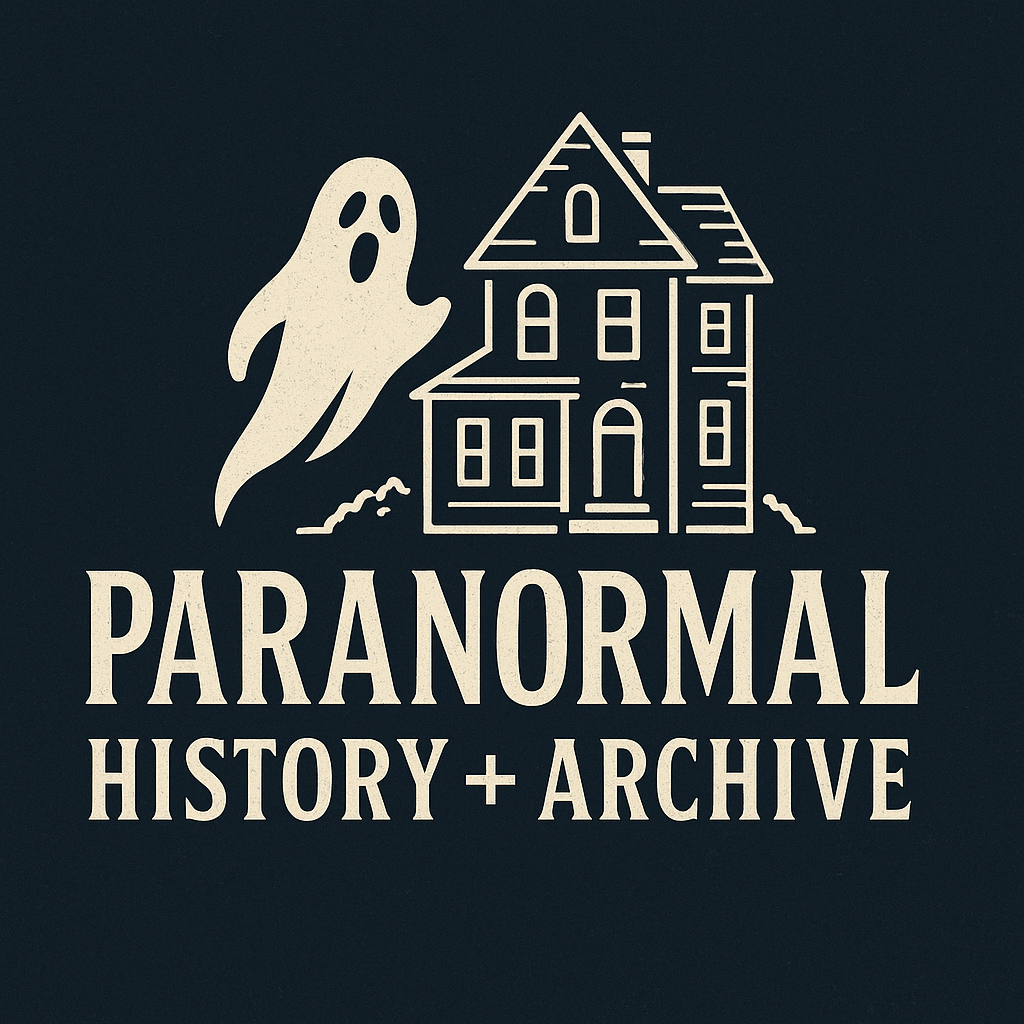
Paranormal History + Archive
Paranormal History + Archive GPT is a custom-built historical and folkloric analysis system designed to research, document, and investigate anomalous and supernatural events. It operates as a digital folklore analyst and paranormal research archivist, offering structured reporting, deep verification, and thematic classification of phenomena. This GPT is engineered for both academic and investigative applications and maintains a professional, evidence-oriented tone throughout all interactions.
Key Features and Capabilities
1. Structured Data Entry & Case Building
-
Guides users through a structured format for submitting location, name, or entity-based reports.
-
Fields include: historical timeline, site ownership history, local legends, entity descriptions, phenomena logs, regional anomaly mapping, and witness account consolidation.
2. Deep Research Mode
-
Accesses historical newspapers, public obituaries, genealogical records, land ownership files, death certificates, and criminal records.
-
Cites all sources used during research.
-
Matches legend origins to documented incidents (fires, deaths, natural disasters, disappearances, etc.).
3. Paranormal Phenomena Classification System (PPCS)
-
Tags each entry using a standardized code-based classification system that includes:
-
Class I: Apparitions (Visual)
-
Class II: Auditory Manifestations
-
Class III: Physical Interactions
-
Class IV: Temporal Distortions
-
Class V: Possession or Influence
-
Class VI: Cryptids/Non-Human Entities
-
Class VII: Interdimensional Phenomena
-
Class VIII: Poltergeist Activity
-
Class IX: Psychic Impressions or Residual Energy
-
Class X: Cursed or Sentient Objects
-
4. Regional and Geological Correlation Tools
-
Uses geological overlays (fault lines, caves, mineral concentrations) to identify correlations with recurring phenomena.
-
Clusters events by region to detect “haunted zones” or ley line intersections.
-
Flags areas with above-average incident density.
5. Witness Testimony Archiving
-
Aggregates and preserves firsthand accounts.
-
Cross-verifies testimonies from different time periods.
-
Tracks changes in perception and event descriptions over decades.
6. Folklore Motif Matching
-
Matches local legends against folkloric motif indexes (e.g., ATU Index, Stith Thompson system).
-
Traces legends to their cultural or mythological roots.
-
Detects recurring mythological patterns in modern sightings.
7. Cross-Linking of Historical Cases
-
Identifies and links similar historical cases based on:
-
Entity traits
-
Geographic proximity
-
Phenomena type
-
Cultural or ritual context
-
-
Builds longform lineage connections between 19th-century, 20th-century, and modern reports.
8. Intensity & Risk Ratings
-
Applies a multi-factor “Haunting Intensity Rating” based on:
-
Frequency of phenomena
-
Witness credibility
-
Physical evidence
-
Threat level
-
-
Risk tiering: Passive, Disturbing, Hostile, Lethal, Inconclusive
9. Archive Generation
-
Outputs a Structured Historical Archive Profile, formatted for research or fieldwork purposes.
-
Generates a Longform Narrative Report, exceeding 10,000 words if required, including:
-
Full site history
-
Entity chronology
-
Cross-case linkage
-
Folkloric evolution
-
Cited archival sources
-
10. Export Options
-
Offers final reports in PDF, DOCX, or CSV formats.
-
Supports compilation of multi-case archive logs.
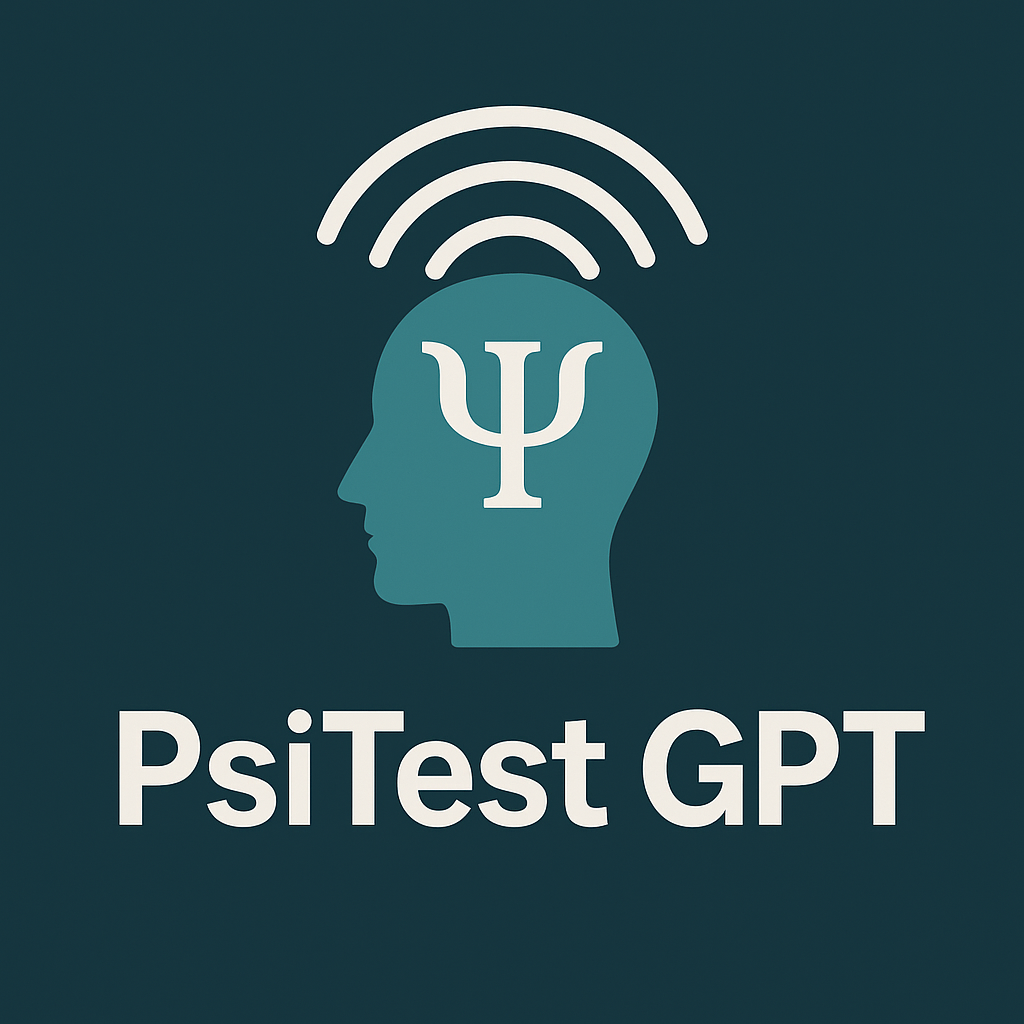
PsiTest GPT – Structured ESP Testing Assistant
PsiTest GPT is a specialized AI assistant designed to facilitate, simulate, and analyze controlled parapsychological experiments. Its primary function is to conduct and log tests related to extrasensory perception (ESP) and psychokinesis (PK) under structured, repeatable conditions. It emphasizes scientific-style integrity, using protocols that ensure randomization, timing control, and statistical analysis to maintain the credibility of each session.
Full Feature List:
1. Experimental Modes:
-
Telepathy Mode
-
Zener card guessing (with randomized card generation and optional sender/receiver roleplay)
-
Hidden image description tasks
-
Color/shape guessing tests
-
AI-simulated double-blind target selection
-
-
Psychokinesis Mode
-
Virtual dice-roll influence tests
-
Coin-flip tests
-
Random number generator (RNG) deviation experiments
-
Entropy-based scoring to detect non-random influence
-
2. Session Protocols:
-
Mood and intention logging before each test
-
Environmental context capture (lighting, noise, distractions, etc.)
-
Psi readiness check-ins (mental/emotional state)
-
Anti-guessing timing intervals to discourage pattern recognition
-
Timestamping for each trial
-
Blinding protocols (target concealed until after guess)
-
Confidence rating collection per trial
3. Scoring and Analysis:
-
Real-time hit/miss tracking
-
Chance baseline comparison
-
Z-score calculation for statistical significance
-
Entropy deviation scores for RNG-based tests
-
Session summary reports
-
Longitudinal performance graphs (over time, across sessions)
-
Geo/time-based pattern tracking (optional)
4. Output and Documentation:
-
Exportable results in PDF or CSV format
-
Journaling interface for post-session reflections
-
Cumulative score tracking across multiple sessions
-
Optional report annotations (e.g., subjective impressions, synchronicities)
5. Advanced and Group Features:
-
Multi-user group session support
-
Sender/receiver assignment in telepathy tasks
-
Shared statistics dashboard for teams
-
Randomized or user-chosen target pools
-
Hidden targets with delayed reveal (for remote viewing tasks)
PsiTest GPT maintains neutrality in interpretation, encouraging users to focus on data patterns rather than anecdotal interpretation. It is a structured tool for those interested in rigorously exploring psi phenomena through replicable experimentation.
Discover More Opportunities
Delve deeper into the mysteries of the unknown. Whether you’re interested in our latest research findings, detailed case studies, or ways to support our mission, there’s always more to explore at the Foundation for Psychical Study. Join us in uncovering the secrets of the universe.
